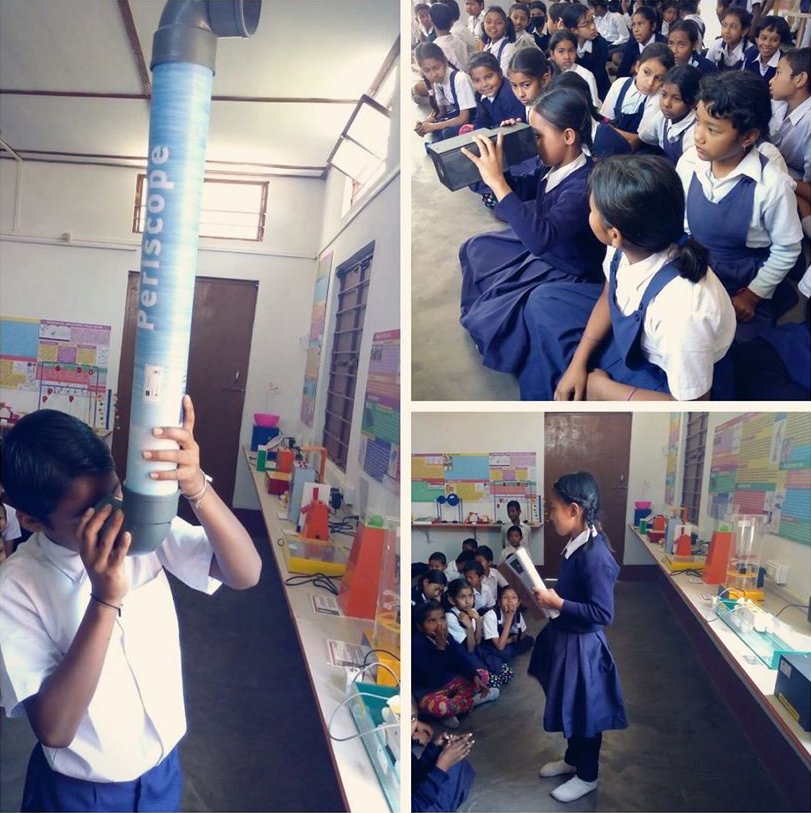STEM and AI are transforming education and career paths for the 21st century in India.
STEM (Science, Technology, Engineering, and Mathematics) education and AI (Artificial Intelligence) are greatly transforming education and career paths, not just globally, but specifically in India as well.
The 21st century is a time of rapid technological change, and India is no exception. The country is home to a large and growing population of young people, many of whom are eager to learn about and participate in the latest technological advancements. STEM (science, technology, engineering, and mathematics) education and artificial intelligence (AI) are two areas that are having a major impact on education and career paths in India.
STEM Education
STEM education is essential for preparing students for the jobs of the future. STEM-related fields are growing at a faster rate than other sectors of the economy, and there is a high demand for skilled workers in these areas. STEM education can help students develop the critical thinking, problem-solving, and creativity skills that are essential for success in these fields.

STEM (Science, Technology, Engineering and Mathematics) education is important for developing competencies for the 21st century, especially in the context of Industrial Revolution 4.0 and the 2030 Sustainable Development Goals.
India has made significant progress in STEM education in recent years. The government has increased funding for STEM education, and there has been a growing focus on STEM education in schools and universities. As a result, India is now home to a large and growing pool of STEM talent.
Tinkering in Education
Tinkering is a valuable tool for education in India. It can help students develop the skills they need to succeed in the 21st-century economy. Tinkering is a hands-on, experimental approach to learning that encourages creativity and innovation. It is a valuable tool for education in India, where there is a growing focus on STEM (science, technology, engineering, and mathematics) education.
Tinkering can help students develop the critical thinking, problem-solving, and creativity skills that are essential for success in STEM fields. It can also help students learn how to work collaboratively and communicate effectively. Tinkering is a valuable tool for education in India. It can help students develop the skills they need to succeed in STEM fields and in life. As the demand for STEM-related skills continues to grow, tinkering will become increasingly important in India’s education system.
In India, tinkering is being used in a variety of ways to improve education. For example, the Atal Tinkering Labs (ATLs) program is a government initiative that has established over 10,000 tinkering labs in schools across the country. These labs provide students with access to a variety of tools and materials, and they offer a variety of activities that encourage students to tinker and explore.
Tinkering is also being used in informal education settings in India. For example, there are a number of tinkering clubs and workshops that are open to students of all ages. These clubs and workshops provide students with opportunities to learn new skills, meet other like-minded individuals, and share their ideas.
Here are some of the benefits of tinkering in education:
It can help students develop creativity and innovation.
It can help students learn how to think critically and solve problems.
It can help students learn how to work collaboratively and communicate effectively.
It can help students develop a passion for learning.
It can help students build confidence and self-esteem.
It can help students prepare for future careers in STEM fields.
AI in Education
AI is another area that is having a major impact on education in India. AI-powered tools and applications are being used to improve teaching and learning in a variety of ways. For example, AI can be used to personalize learning, provide real-time feedback, and create engaging and interactive learning experiences.
AI is also being used to develop new educational models that can help students learn more effectively. For example, AI-powered chatbots can provide students with personalized tutoring and support. AI-powered virtual reality (VR) and augmented reality (AR) applications can create immersive learning experiences that help students understand complex concepts.

AI is one of the key technologies that is transforming education and career paths in India and around the world. AI can provide personalized learning, adaptive assessment, intelligent tutoring, data-driven insights and innovative solutions to various educational challenges.
India has a high relative AI skill penetration rate (over 3 times the global average) and a growing AI literacy among its youth. India also has a vibrant AI ecosystem with various startups, initiatives and platforms that are using AI to enhance education outcomes and opportunities.
Here are a few ways STEM and AI are transforming education and career paths for the 21st century in India:
The Future of STEM and AI in Education in India
STEM and AI in education have a promising future in India. The government is dedicated to investing in STEM education, and there is a growing demand in the workforce for STEM-related skills. In India, AI is also being used to improve education, and this trend is expected to continue in the coming years.
As a result of these trends, India is well-positioned to become a global leader in STEM and AI education. By investing in STEM education and AI, India can ensure that its students have the skills they need to succeed in the 21st-century economy.
India has integrated AI into its New Education Policy 2020, which aims to expose students to digital literacy, coding and computational thinking from a young age, and to offer courses on AI and related topics at the undergraduate and postgraduate levels. The policy also envisions using AI for promoting multilingualism, holistic education and high-quality research.
Interesting Facts
In 2019, the Indian government announced a plan to invest $10 billion in STEM education over the next five years.
The number of STEM graduates in India is expected to grow from 2 million in 2019 to 10 million by 2025.
The demand for STEM-related skills in India is expected to grow by 50% by 2025.
AI is being used in education in India in a variety of ways, including personalized learning, real-time feedback, and immersive learning experiences.
The government of India is committed to using AI to transform education in the country.
Challenges
Challenges such as resource limitations, infrastructure, and teacher training remain and need to be addressed to fully harness the potential of STEM and AI.
About the Author
Ashutosh Pandit is the CEO of STEM Learning, a social enterprise that has empowered over hundreds of schools with STEM education by establishing mini science centres with the support of over 150 corporate partners under Corporate Social Responsibility (CSR) in 23 states in India





